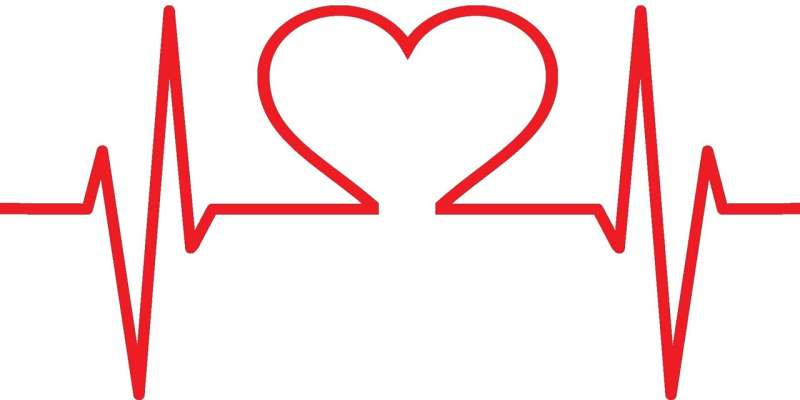Where and when violent crime rates fall, heart disease deaths fall, too

In addition to keeping city residents safer where they live, work, and play, , a new analysis of data from Chicago shows that as violent crime decreases, so does the area's death rate from heart disease. This study, published in theJournal of the American Heart Associationfrom researchers at the Perelman School of Medicine at University of Pennsylvania, demonstrated the deep impact that violence can have not just on the individuals involved, but also in the community at large.
"It's important to acknowledge the impact of the built environment on health," said the study's lead author, Lauren Eberly, MD, a clinical fellow in Cardiovascular Medicine and associate fellow of the Leonard Davis Institute. "Exposure toviolent crimeappears to be an important social determinant of cardiovascular health within the broader context of the ways in which structural racism harms health."
Data from the most recent 15 years of data available out of Chicago, 2000-2014, covered an overall, significant decline in violent crime. City-wide, the decline was 16 percent total, and coincided with a 13 percent decrease in cardiovascular diseasemortality.
But when the researchers examined neighborhood-level numbers, they saw that deeper declines in violent crime appeared to correlate with sharper declines inheart disease-related mortality, too. For instance, the group of neighborhoods with the greatest decrease in violent crime averaged a 59 percent drop, which correlated with a nearly 15 percent total drop in heart disease mortality. Even in the areas with the lowest change in violent crime (a 10 percent decrease), cardiovascular mortality still declined by more than 11 percent.
That the mortality rates declined less when violence crime declined less was notable.
"Because community areas that experienced the smallest decline in crime also experienced the smallest improvements in cardiovascular mortality, pre-existing disparities in mortality between neighborhoods in the city are likely to worsen over time, especially with the recent rise in crime rates in the United States," Eberly said. "While these results represent one large, urban U.S. city that could potentially not be generalizable to other cities, we suspect that these results are likely reflective of many other large urban cities across the country."
Research has shownthat violent crime tends to disproportionately affect the areas where people of color live. While the research of Eberly and her colleagues didn't explicitly examine the racial makeups of the neighborhoods examined, that foreknowledge shows that the study's findings likely have strong significance.
"We hope that, given these results, people will consider the root causes of violence," Eberly said. "We must acknowledge the legacy of racist policies and practices that have led to concentrated disadvantage and crime in Black and other racially and ethnically minoritized neighborhoods. Policies must be implemented to address the health consequences of structural racism andracial segregation."
该研究的合著者之一,尤金尼亚南部,医学博士an assistant professor of Emergency Medicine and director of the Penn Urban Health Lab, has performed clinical trials around neighborhood interventions aimed at improving public health—and decreasing violence. These have includedincreasing green spaceandstructural repairs to the homes of low-income owners.
"In light of our latest analysis, such interventions' impact on cardiovascular health warrants further attention," Eberly said.
Data from 2000 until 2014 was the most recent set available to fully examine. Since then, violent crime has increased, both in Chicago and in many areas across the country. While Eberly could not say for sure due to data not being available for more recent years, Eberly said that it is possible that these increases also are translating to increases in cardiovascular death rates.
The study also didn't divide the violent crime out into different types. In cities like Philadelphia, gun crime has spiked since the pandemic.
"It is possible that different types of crime rates in a neighborhood may have different relationships with community health, which needs to be investigated further," said the study's senior author, Sameed Khatana, MD, an assistant professor of Cardiovascular Medicine. "Even if violentcrime ratesin a neighborhood are a marker of cardiovascular health, rather than the specific cause of cardiovascular deaths, the rise in any type of violentcrimeis concerning as it may identify neighborhoods where residents are especially vulnerable to worsening cardiovascular health in the years to come."
Explore further














